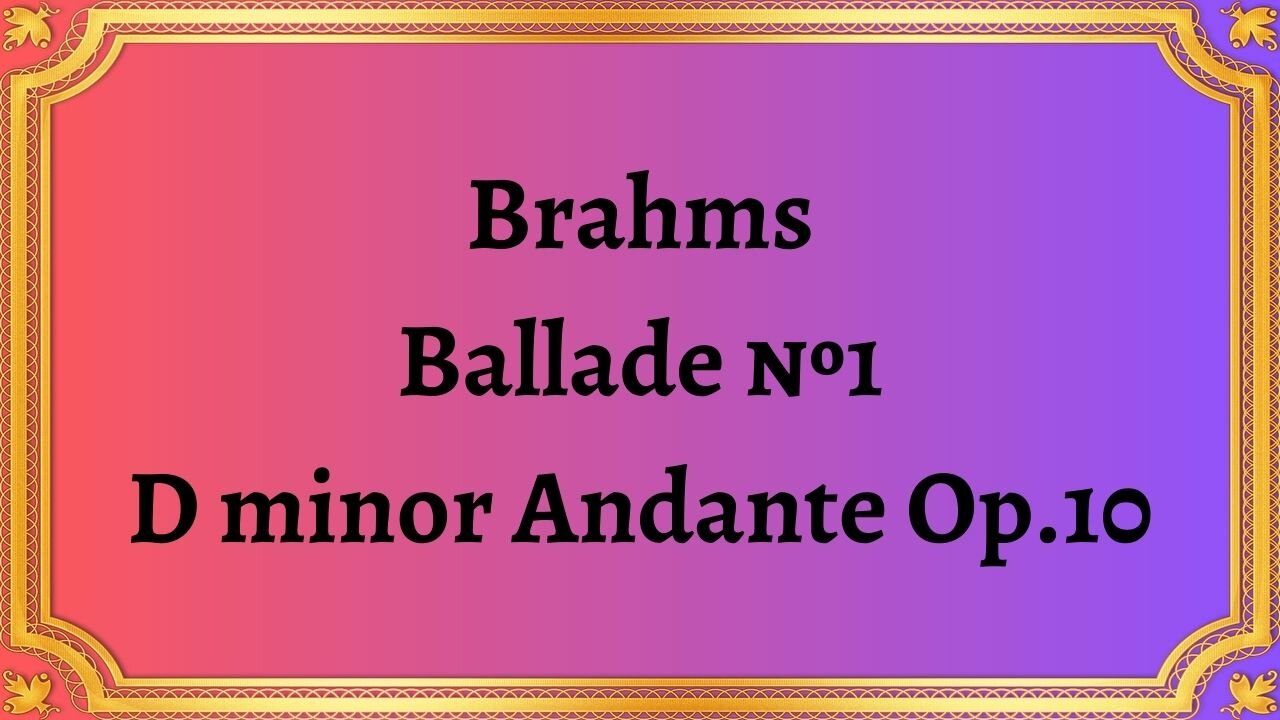Premium Only Content

Brahms Ballade №1 D minor Andante Op.10
#Brahms #classical_music#ballade
Brahms Ballade No. 1 D minor Andante Op.10 is a musical work by German composer Johannes Brahms. It was composed in the mid-19th century and is considered one of Brahms's most remarkable pieces. The ballade is structured in a single movement and features an Andante tempo in a minor key, which gives the piece a mournful and poignant quality.
The ballade is notable for its poetic and contemplative character. It tells a story through music, evoking images of a hero's journey or a romantic tragedy. The opening notes create a sense of melancholy, with a slow and mournful melody that sets the tone for the piece. As the piece progresses, the music becomes more complex, featuring intricate harmonies and variations on the main themes.
Brahms's use of dynamics in the ballade is especially noteworthy. He builds up the music in waves, with sudden shifts in volume and intensity that create a sense of drama and tension. The music is full of contrasts, with passages of deep sadness followed by moments of hope and resolution.
The ballade has been interpreted in many different ways over the years, reflecting the individual interpretations of each performer. It is often regarded as a complex and challenging piece to perform, requiring a high degree of technical skill and musical understanding. However, it is also a deeply rewarding piece, with a wealth of emotional expression and musical beauty.
In conclusion, Brahms Ballade No. 1 D minor Andante Op.10 is a remarkable piece of music that showcases Johannes Brahms's gift for musical storytelling. Its melancholic character, complex harmonies, and rich dynamics make it a challenging and rewarding work for both performers and listeners. It is a testament to Brahms's mastery of his craft and the enduring appeal of his music.
You have the opportunity to support the channel https://destream.net/live/RadSiarAl/donate
-
 22:54
22:54
Classical music_Music Inspiration
1 day agoLudwig van Beethoven Quartet No. 6 in B-flat major, Op. 18 No. 6
132 -
 9:06
9:06
otmazani
2 years agoChopin Tuto - Ballade No. 1 in G minor
1 -
 22:29
22:29
Ambient Music Tours
2 years agoChopin's Ballade No 1 in G minor | Classical Music Tuesday
26 -
 38:54
38:54
Classical music_Music Inspiration
2 years agoJohannes Brahms Symphony №4 in E minor, Op.98
22 -
 24:25
24:25
Classical Music P.D.
2 years agoClarinet Trio, in A minor Op.114 - Brahms 'Marlboro Ensemble'
16 -
 27:01
27:01
Classical Music P.D.
2 years agoPiano Sonata No. 2 in F minor, Op. 2 - Johannes Brahms 'Hardy Rittner'
18 -
 1:49
1:49
rayzerbikes
2 years agoKAWAI ES920 Demo -- Chopin Ballade in G Minor
12 -
 1:19:55
1:19:55
TruthStream with Joe and Scott
1 day agoLisa, Michelle and Carole join Joe for Healing and Inspiration. Next healing will be on Aug 28th at Noon and 4pm eastern https://www.balancingbodyandsoul.com/?ref=TRUTHSTREAMSHOW
3.54K1 -
 10:32
10:32
Nikko Ortiz
15 hours agoFunniest Fails Of The Month
24.6K3 -
 28:59
28:59
The Jack Brewer Show
12 hours agoThe Jack Brewer Show S1 EP5 Charles Duke Tanner on Redemption, Fatherhood & Second Chances #podcast
16